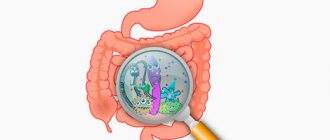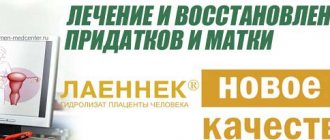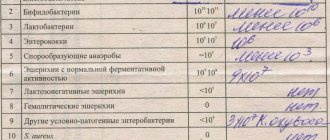- About the PCR method
- Prices for PCR diagnostics
PCR (polymerase chain reaction) is by far the fastest and most reliable method for diagnosing infectious diseases .
The principle of the polymerase chain reaction method was developed by Kary Mullis in 1983. For his discovery, K. Mullis received the Nobel Prize in Chemistry in 1993.
The PCR method allows you to achieve a significant increase in small concentrations of certain nucleic acid (DNA) fragments in biological material (sample). The method is based on repeated selective copying (amplification) of a certain section of DNA using enzymes under artificial conditions.
Advantages of the PCR diagnostic method as a method for diagnosing infectious diseases
Direct detection of pathogens
Many traditional diagnostic methods, such as enzyme immunoassay, identify marker proteins that are waste products of infectious agents, which provides only indirect evidence of the presence of infection. Identification of a specific section of pathogen DNA by PCR gives a direct indication of the presence of the infectious agent.
High specificity
The high specificity of the PCR method is due to the fact that a unique DNA fragment, characteristic only for a given pathogen, is detected in the material under study. Specificity is determined by the nucleotide sequence of the primers, which eliminates the possibility of obtaining false results, in contrast to immunological methods of analysis, where errors due to cross-reacting antigens are common.
High sensitivity
The PCR method allows you to detect even single cells of bacteria or viruses. PCR analysis detects the presence of pathogens of infectious diseases in cases where this cannot be done by other methods (immunological, bacteriological, microscopic). The sensitivity of PCR analysis is 10-100 cells per sample (the sensitivity of immunological and microscopic tests is 103-105 cells).
The universality of the procedure for identifying various pathogens
The material for research using the PCR method is the DNA of the pathogen. The method is based on identifying a fragment of DNA or RNA that is specific to a particular organism. The similarity of the chemical composition of all nucleic acids allows the use of unified methods for conducting laboratory research. This makes it possible to diagnose several pathogens from one biosample.
High speed of obtaining analysis results
To carry out PCR analysis, it is not necessary to isolate and grow a culture of the pathogen, which takes a lot of time. A unified method for processing biomaterial and detecting reaction products and automation of the amplification process make it possible to conduct a complete analysis in 4-5 hours.
Possibility of diagnosing not only acute, but also latent infections
The PCR method is especially effective for diagnosing difficult-to-cultivate, unculturable and persistent forms of microorganisms, which are often encountered in latent and chronic infections, since this method avoids the difficulties associated with growing such microorganisms in laboratory conditions. The use of PCR diagnostics is also very effective against pathogens with high antigenic variability and intracellular parasites.
Shigella and enteroinvasive E.coli strains, DNA [real-time PCR]
Molecular genetic analysis, which allows you to detect the genetic material of the causative agents of shigellosis and escherichiosis in feces.
What is this analysis used for?
- For the diagnosis of intestinal infections caused by bacteria of the genus Shigella or enteroinvasive E. coli.
When is the test scheduled?
- If you have symptoms of an acute intestinal infection (diarrhea, blood in the stool, fever, abdominal pain);
- when examining contact persons.
Synonyms Russian
Shigella and enteroinvasive Escherichia coli (EIEC) (Escherichia, colibacteria), causative agents of shigellosis (bacterial dysentery) and escherichiosis.
English synonyms
Shigella species and enteroinvasive Escherichia coli (EIEC), DNA, PCR, fecal samples.
Research method
Polymerase chain reaction (PCR).
What biomaterial can be used for research?
Cal.
How to properly prepare for research?
- The study is recommended to be carried out before starting antibiotics and other antibacterial chemotherapy drugs.
- Avoid taking laxatives, administering rectal suppositories, oils, limit taking medications that affect intestinal motility (belladonna, pilocarpine, etc.) and the color of stool (iron, bismuth, barium sulfate) for 72 hours before stool collection.
General information about the study
Shigella species and Escherichia coli are gram-negative rod-shaped microorganisms from the Enterobacteriaceae family. Shigella and enteroinvasive Escherichia coli (EIEC) are normally absent from the body. Their identification indicates an intestinal infection, which requires treatment of the patient and limiting the spread of the disease.
The genus Shigella includes pathogenic bacteria S. dysenteriae, S. flexneri, S. boydii and S. sonnei, which are the causative agents of shigellosis (bacterial dysentery).
Bacteria of the genus E. coli differ from each other in biochemical and pathogenic properties. Not all E. coli, but only some biovars and serotypes of colibacteria are capable of causing escherichiosis. Typical colibacteria are representatives of the normal microbiota of the human intestine, participate in digestive processes and belong to the opportunistic environment. Escherichia coli, which synthesize and secrete Shigella-like toxin, contribute to the development of escherichiosis, which occurs as an invasive acute intestinal infection (dysentery). EICP, like Shigella, can penetrate the cells of the intestinal mucosa and destroy enterocytes, which leads to the formation of ulcerative defects in the intestinal mucosa.
Shigella and E. coli are spread by the fecal-oral transmission mechanism, which is realized through food, water and household contact.
The incubation period ranges from several hours to several days and depends on the number of bacteria, their pathogenic properties and the characteristics of human defense mechanisms. The disease can occur in mild forms with mild symptoms, or with the development of severe infection. The signs of shigellosis and enteroinvasive escherichiosis are similar: acute onset, sharp abdominal pain, repeated stool mixed with mucus and blood, spasm of the sigmoid colon, general intoxication.
About 8% of cases of invasive escherichiosis lead to hemolytic-uremic syndrome, which manifests itself as acute renal failure, hemolytic anemia, thrombocytopenia and purpura.
After recovery, bacteria may be shed in the stool for a long time (typical of shigellosis), which contributes to the spread of infection.
It is also necessary to take into account that there are several pathological conditions and intestinal infections that are accompanied by the above symptoms, but are treated differently. When evaluating a patient with bloody diarrhea, it is necessary to first rule out shigellosis, escherichiosis, amoebiasis, chemical poisoning, ulcerative colitis, Crohn's disease, acute intestinal obstruction, and mesenteric vascular thrombosis.
To identify and differentially diagnose intestinal infections, cultural and molecular genetic methods are used to study the genetic material of the pathogen in feces and determine the concentration of specific immunoglobulins in the blood. PCR has an advantage over the culture method due to the rapid production of results and the high specificity and sensitivity of the study. Quick diagnosis of acute intestinal infections allows you to avoid unnecessary invasive procedures and surgical interventions, start treatment in a timely manner and limit the source of infection.
What is the research used for?
- For the diagnosis of shigellosis;
- for the diagnosis of escherichiosis;
- for differential diagnosis of acute intestinal infections.
When is the study scheduled?
- If you have symptoms of an acute intestinal infection (diarrhea, streaks of blood in the stool, abdominal pain, spasm of the sigmoid colon);
- after a recent illness accompanied by blood in the stool;
- when examining persons who have been in contact with a patient with shigellosis or escherichiosis;
- when examining patients with hemolytic-uremic syndrome.
What do the results mean?
Reference values: negative.
Reasons for the positive result:
- shigellosis and/or escherichiosis;
- transient bacterial carriage.
Reasons for negative results:
- absence of infection with bacteria of the genus Shigella and enteroinvasive E. coli.
What can influence the result?
If the material is contaminated, a false positive result is likely.
Important Notes
This research method does not allow one to accurately determine the type of infectious agent, but it makes it possible to assess the clinical situation and timely prescribe adequate therapy. At the same time, it is necessary to take stool for bacteriological examination to determine sensitivity to antibiotics.
Also recommended
- anti-Shigella flexneri 1-5, anti-Shigella sonnei
- Salmonella species, DNA [PCR]
- Rotavirus A, RNA [PCR]
- Intestinal dysbiosis with determination of sensitivity to antibiotics and bacteriophages
- Stool culture for pathogenic flora (disease group and typhoid-paratyphoid group)
- Stool culture for opportunistic flora with determination of sensitivity to antibiotics
- Analysis of stool for cysts and vegetative forms of protozoa
- Coprogram
Who orders the study?
Infectious disease specialist, gastroenterologist, therapist.
Literature
- Vozianova Zh. I. Infectious and parasitic diseases: In 3 volumes - K.: Health, 2000. - T.1.: 405-433, 524-564.
- Gómez-Duarte O., Bai J., Newel E.. Detection of E. coli, Salmonellaspp., Shigellaspp., Yersiniaenterocolitica, Vibriocholerae, and Campylobacter spp. enteropathogens by Three-reaction Multiplex PCR. Diagn Microbiol Infect Dis. January 2009; 63(1): 1–9. PMCID:PMC2701628.
Materials for PCR diagnostics can be
- Epithelial scrapings from mucous membranes. Typically used to diagnose sexually transmitted diseases (STDs), such as gonorrhea, chlamydia, mycoplasmosis, ureaplasmosis, trichomoniasis, gardnerellosis, herpes and other infections that affect the mucous membranes.
- Urine. Urine can be used for infections of the genitourinary tract in men and urinary organs in women (in men, the use of urine as a material replaces epithelial scraping).
- Sputum. Sputum is used to diagnose tuberculosis and, less commonly, to diagnose respiratory forms of chlamydia and mycoplasmosis. Sputum in an amount of 15-20 ml is collected in a sterile (disposable) bottle.
- Blood, plasma, serum. Used for PCR analysis of hepatitis B, C, D, G, herpes, CMV, HIV viruses, and research of human genes.
- Biological fluids. Prostate juice, pleural, spinal, amniotic fluid, joint fluid, bronchoalveolar lavage, saliva are collected according to indications.
- Biopsies. Most often, biopsies of the stomach and duodenum are used to detect Helicobacter pylori infection.
Analysis for Helicobacter pylori
Often, stomach problems are caused by a pathogenic bacterium - Helicobacter pylori. It has the shape of a spiral and is recognized as a pathogenic parasitic microorganism. In the human body, it multiplies and begins to produce toxins, which subsequently affect the mucous membrane of the duodenum and stomach.
Content:
- Analysis for Helicobacter pylori
- When is a stool test for Helicobacter prescribed?
- Preparing and conducting analysis
- Decoding the results
Helicobacter is one of the bacteria that can cause an inflammatory process, followed by the development of gastritis or ulcers. Previously, doctors associated stomach pain only with poor diet, and patients with similar symptoms were prescribed special diets. But with the discovery of Helicobacter pylori, it has been proven that the cause of ulcers and gastritis is in fact often this microorganism. The routes of transmission of Helicobacter pylori infection are not entirely clear to this day. There is evidence of gastro-oral, oral-oral and fecal-oral transmission. Genetic factors also play a role.
Therefore, in order to avoid such situations, you need to know the first rules of prevention and periodically take appropriate tests. It should be noted that almost all bacteria die in an acidic environment, but Helicobacter pylori quickly gets used to it and masters it. Microorganisms are able to develop in an acidic gastric environment.
Due to its properties, this parasite easily penetrates the walls of the esophagus and adapts to different environments, especially aggressive ones. The bacterium moves with the help of small flagella, which easily adhere to the mucous membrane. Every day more and more people become infected with this microorganism. In Russia, the disease is diagnosed several dozen times more often than in residents of Europe and the United States of America.
Experts attribute this to a low standard of living, poor hygiene, living in unsanitary conditions and much more.
Cost of PCR analysis in our medical center
| Study title | Clinical material | Result | Expiration date | Price |
| BACTERIAL INFECTIONS | ||||
| Chlamydia | ||||
| Chlamydia trachomatis DNA | scraping urogenitis. tract, prostate secretion, sperm, urine, conjunctival smear, oropharyngeal smear, synovial fluid | quality | 2 w.d. | 190.00 rub. |
| Chlamydia trachomatis DNA | scraping urogenitis. tract, urine, vaginal smear | count | 3 w.d. | 560.00 rub. |
| Mycoplasmas | ||||
| Mycoplasma hominis DNA | scraping from urogenitis. tract secretion of the prostate, sperm, urine | quality | 2 w.d. | 190.00 rub. |
| Mycoplasma hominis DNA | scraping from the urogenital tract | count | 3 w.d. | RUB 360.00 |
| Mycoplasma genitalium DNA | scraping urogenitis. tract, prostate secretion, sperm, urine | quality | 2 w.d. | 190.00 rub. |
| Mycoplasma genitalium DNA | scraping urogenitis. tract, urine, vaginal smear | count | 3 w.d. | 560.00 rub. |
| Ureaplasma | ||||
| U.urealyticum/U. parvum DNA | scraping from urogenitis. tract, urine, secretions prostate, sperm | quality | 2 w.d. | 190.00 rub. |
| U.urealyticum/U. parvum DNA | scraping urogenitis. tract | count | 3 w.d. | 420.00 rub. |
| Gardnerellas | ||||
| Gardnerella vaginalis DNA | scraping from urogenitis. tract | quality | 2 w.d. | 190.00 rub. |
| Treponema | ||||
| Treponema pallidum DNA | scraping from urogenitis. tract, prostate secretion | quality | 2 w.d. | 190.00 rub. |
| Neisseria | ||||
| Neisseria gonorrhoeae DNA | scraping from urogenitis. tract, urine, prostate secretion, sperm | quality | 2 w.d. | 190.00 rub. |
| Neisseria gonorrhoeae DNA | scraping from the urogenital tract, urine, vaginal smear | count | 3 w.d. | 630.00 rub. |
| Mycobacteria | ||||
| Mycobacterium tuberculosis complex DNA | prostate secretion, sperm, urine, sputum, CSF, BAL, pancreas, synovial fluid | quality | 2 w.d. | 290.00 rub. |
| Group A streptococci | ||||
| DNA of Streptococcus pyogenes (Group A Streptococcus) | oropharyngeal swab | quality | 2 w.d. | 290.00 rub. |
| Group B streptococci | ||||
| Streptococcus agalactia (SGB) DNA | scraping from the urogenital tract, urine | count | 2-3 days | 260.00 rub. |
| Streptococcus agalactia (SGB) DNA | blood with EDTA | count | 3 w.d. | 630.00 rub. |
| Streptococcus agalactia (SGB) DNA | oropharyngeal swab, sputum, BAL fluid, CSF | count | 3 w.d. | 630.00 rub. |
| Listeria | ||||
| Listeria monocytogenes DNA | CSF, AJ | quality | 2 w.d. | 420.00 rub. |
| Listeria monocytogenes DNA | blood with EDTA | quality | 4 w.d. | 420.00 rub. |
| Listeria monocytogenes DNA | feces | quality | 3 w.d. | 440.00 rub. |
| Whooping cough | ||||
| Bordetella pertussis/parapertussis/bronchiseptica DNA | nasal/throat swab, aspirate, sputum, BAL | quality | 3 w.d. | 1260.00 rub. |
| INTESTINAL INFECTIONS | ||||
| Campylobacter species DNA | feces | quality | 4 w.d. | 440.00 rub. |
| Salmonella species DNA | feces | quality | 4 w.d. | 440.00 rub. |
| Shigella + E. coli DNA (enteroinvasive strains) | feces | quality | 4 w.d. | 760.00 rub. |
| Salmonella/Shigella/Campylobacter/Adenovirus DNA | feces | quality | 3 w.d. | 830.00 rub. |
| RNA Rotavirus / Astrovirus / Norovirus / Enterovirus | feces | quality | 3 w.d. | 950.00 rub. |
| Diarogenic Escherichiosis | feces | quality | 3 w.d. | RUB 730.00 |
| FUNGAL INFECTIONS AND PROTOZOOS | ||||
| Candida | ||||
| Candida albicans DNA | scraping from urogenitis. tract | quality | 2 w.d. | 190.00 rub. |
| Toxoplasma | ||||
| Toxoplasma gondii DNA | CSF, AJ | quality | 2 w.d. | RUB 390.00 |
| Toxoplasma gondii DNA | blood with EDTA | quality | 4 w.d. | RUB 390.00 |
| Trichomonas | ||||
| Trichomonas vaginalis DNA | scraping from urogenitis. tract, prostate secretion, urine | quality | 2 w.d. | 190.00 rub. |
| Trichomonas vaginalis DNA | scraping from urogenitis. tract, urine, vaginal smear | count | 3 w.d. | RUB 390.00 |
| Pneumocysts | ||||
| DNA of Pneumocystis jirovecii (carinni) | oropharyngeal swab, sputum, BAL | quality | 3 w.d. | 320.00 rub. |
| VIRAL INFECTIONS | ||||
| Hepatitis A | ||||
| HAV RNA | blood with EDTA | quality | 4 w.d. | 440.00 rub. |
| Hepatitis B | ||||
| HBV DNA | biopsy | quality | 7 w.d. | 440.00 rub. |
| HBV DNA | blood with EDTA | quality | 4 w.d. | 440.00 rub. |
| HBV DNA | blood with EDTA | count | 7 w.d. | 1420.00 rub. |
| HBV DNA | blood with EDTA | gene. | 10 w.d. | 1160.00 rub. |
| Hepatitis B virus DNA (HBV DNA), ultrasensitive method | blood with EDTA | quality | 10 w.d. | 2100.00 rub. |
| Hepatitis C | ||||
| HCV RNA | biopsy | quality | 7 w.d. | 440.00 rub. |
| HCV RNA | blood with EDTA | quality | 4 w.d. | 440.00 rub. |
| HCV RNA | blood with EDTA | count | 7 w.d. | 1950.00 rub. |
| HCV RNA (types 1,2,3) | blood with EDTA | gene. | 4 days | 800.00 rub. |
| HCV RNA (types 1a, 1b, 2, 3a, 4, 5, 6) | blood with EDTA | gene. | 10 w.d. | 1800.00 rub. |
| Hepatitis C virus RNA (HCV RNA), ultrasensitive method | blood with EDTA | quality | 10 w.d. | 1950.00 rub. |
| Hepatitis D | ||||
| HDV RNA | biopsy | quality | 7 w.d. | 440.00 rub. |
| HDV RNA | blood with EDTA | quality | 3 w.d. | 440.00 rub. |
| Hepatitis E | ||||
| HEV RNA | blood with EDTA | quality | 3 w.d. | RUR 780.00 |
| Hepatitis G | ||||
| HGV RNA | blood with EDTA | quality | 3 w.d. | 440.00 rub. |
| Cytomegalovirus | ||||
| DNA Cytomegalovirus | scraping from urogenitis. tract, urine, conjunctival smear, oropharyngeal smear, AF, CSF | quality | 2 w.d. | 190.00 rub. |
| DNA Cytomegalovirus | blood with EDTA | count | 4 w.d. | 410.00 rub. |
| DNA Cytomegalovirus | blood with EDTA (plasma) | count | 10 w.d. | 830.00 rub. |
| Herpes simplex virus | ||||
| DNA Human herpes virus 1, 2 types | scraping urogenitis. tract, oropharyngeal swab, CSF, AF | quality | 2 w.d. | 190.00 rub. |
| DNA Human herpes virus 1, 2 types | blood with EDTA | quality | 4 w.d. | RUB 360.00 |
| Herpes virus type VI | ||||
| DNA Human herpes virus type 6 | oropharyngeal swab, CSF, AF | quality | 2 w.d. | 320.00 rub. |
| DNA Human herpes virus type 6 | blood with EDTA | count | 4 w.d. | RUB 340.00 |
| Epstein-Barr virus | ||||
| Epstein-Barr virus DNA | oropharyngeal swab, CSF, AF | quality | 2 w.d. | RUB 370.00 |
| Epstein-Barr virus DNA | blood with EDTA | count | 4 w.d. | 410.00 rub. |
| Varicella-Zoster virus | ||||
| Varicella-Zoster virus DNA | oropharyngeal swab, CSF, AF | quality | 2 w.d. | RUB 360.00 |
| Varicella-Zoster virus DNA | blood with EDTA | quality | 4 w.d. | RUB 360.00 |
| Papillomavirus | ||||
| HPV DNA types 16 and 18 | Scraping from the urogenital tract (cervical canal, cervix - in women; urethra, foreskin - in men) | quality | 3 w.d. | 190.00 rub. |
| HPV DNA types 6 and 11 | Scraping from the urogenital tract (cervical canal, cervix - in women; urethra, foreskin - in men) | quality | 3 w.d. | 190.00 rub. |
| High-risk HPV DNA quantity (16,18,31,33,35,39,45,51,52,56, 58,59,68 types) | Scraping from the urogenital tract of women (cervical canal, cervix) | count | 5 w.d. | 840.00 rub. |
| Amount of DNA of HPV types 16 and 18 | Scraping from the urogenital tract of women (cervical canal, cervix) | count | 5 w.d. | 440.00 rub. |
| High-risk HPV DNA (types 16,18,31,33,35,39,45,51,52,56, 58,59,68) | Scraping from the urogenital tract (cervical canal, cervix - in women; urethra, foreskin - in men) | quality | 3 w.d. | 320.00 rub. |
| High-risk HPV DNA (types 16,18,31,33,35,39,45,51,52,56, 58,59) | Scraping from the urogenital tract (cervical canal, cervix - in women; urethra, foreskin - in men) | gene. | 5 w.d. | RUB 710.00 |
| Extended HPV test (with determination of the number and type of virus) | Scraping from the cervical canal | comp. | 3-7 w.d. | 1260.00 rub. |
| HPV-PAP test (expanded set of HPV tests with determination of the number and type of virus) | Scraping from the cervical canal (glass + tube) | comp. | 3-7 w.d. | 2840.00 rub. |
| HPV-PAP test liquid (expanded set of HPV tests with determination of the number and type of virus and PAP test) | Liquid scraping from the cervical canal | comp. | 3-7 w.d. | 3360.00 rub. |
| Extended liquid HPV test (with determination of the number and type of virus) | Liquid scraping from the cervical canal | comp. | 3-7 w.d. | 1680.00 rub. |
| Pap test liquid | Liquid scraping from the cervical canal | 7 w.d. | 2540.00 rub. | |
| Enterovirus | ||||
| Enterovirus RNA | CSF, oropharyngeal swab | quality | 3 w.d. | 530.00 rub. |
| Enterovirus RNA | blood with EDTA | quality | 4 w.d. | 420.00 rub. |
| Enterovirus RNA | feces | quality | 4 w.d. | 530.00 rub. |
| Adenovirus | ||||
| RNA Adenovirus | nasal/throat swab, conjunctival swab, CSF | quality | 3 w.d. | 530.00 rub. |
| Influenza viruses A and B, parainfluenza types 1,2,3,4 | ||||
| Influenza A and B virus (RNA Myxovirus influenza) | nasopharyngeal discharge | quality | 2 w.d. | 420.00 rub. |
| Parainfluenza virus types 1,2,3,4 (RNA Parainfluenza virus 1,2,3,4) | nasopharyngeal discharge | quality | 2 w.d. | 480.00 rub. |
| RNA of influenza A and B viruses, parainfluenza types 1,2,3,4 (Myxovirus influenza RNA, Parainfluenza virus RNA 1,2,3,4) | nasopharyngeal discharge | quality | 2 w.d. | RUB 790.00 |
| “Influenza virus A, A/H1N1/CA/2009, B” (swine flu) | nasal and throat swab | quality | 2 w.d. | 1160.00 rub. |
| Parvovirus B19 | ||||
| DNA Parvovirus B 19 | oropharyngeal swab, saliva, AF | quality | 3 w.d. | RUB 770.00 |
| DNA Parvovirus B 19 | blood with EDTA | count | 3 w.d. | 420.00 rub. |
| HIV (Human Immunodeficiency Virus) | ||||
| HIV DNA | blood with EDTA | quality | 10 w.d. | 1580.00 rub. |
| HIV RNA | blood with EDTA | count | 10 w.d. | 4410.00 rub. |
| HIV type 1 RNA/DNA, ultrasensitive method | Purified sperm | 10 w.d. | 9450.00 rub. | |
| Rubella virus | ||||
| Rubella virus RNA | Blood with EDTA | quality | 3 w.d. | RUB 730.00 |
| Rubella virus RNA | Oropharyngeal swab, amniotic fluid (AF), cerebrospinal fluid (CSF, cerebrospinal fluid) | quality | 3 w.d. | 800.00 rub. |
| Respiratory syncytial virus | ||||
| Human respiratory syncytial virus (hRSV) RNA | Nasal/throat swab, aspirate, sputum, BAL | quality | 2 w.d. | 1260.00 rub. |
| COMPLEX DIAGNOSTICS OF ARVI | ||||
| Diagnosis of ARVI RNA hRSv - Respiratory Syncytial virus (human respiratory syncytial virus) RNA hMpv - Metapneumovirus (human metapneumovirus) RNA hCv- Coronavirus (human coronavirus) RNA hRv- Rhinovirus (human rhinovirus) DNA hAdv - Adenovirus B, C, E (adenovirus human groups B, C and E) DNA hBv - Bocavirus (human bocavirus) RNA hPiv - Parainfluenza virus (human parainfluenza virus types 1, 2, 3 and 4) | Nasal/throat swab, aspirate, sputum, BAL | quality | 2 w.d. | 1680.00 rub. |
r.d. — working day, count. - quantitative, quality. - high-quality, gen. — genotyping, AF — amniotic fluid, BAL — broncho-alveolar lavage, CSF — cerebrospinal fluid, PZ — pleural fluid
Rating 3.00 (35 Votes)





![Rice. 2. Clinical stigmas of chronic atrophic gastritis [4] 2. Clinical stigmas of chronic atrophic gastritis [4]](https://zakam.ru/wp-content/uploads/ris-2-klinicheskie-stigmy-hronicheskogo-atroficheskogo-gastrita-4-fig-2-330x140.jpg)


